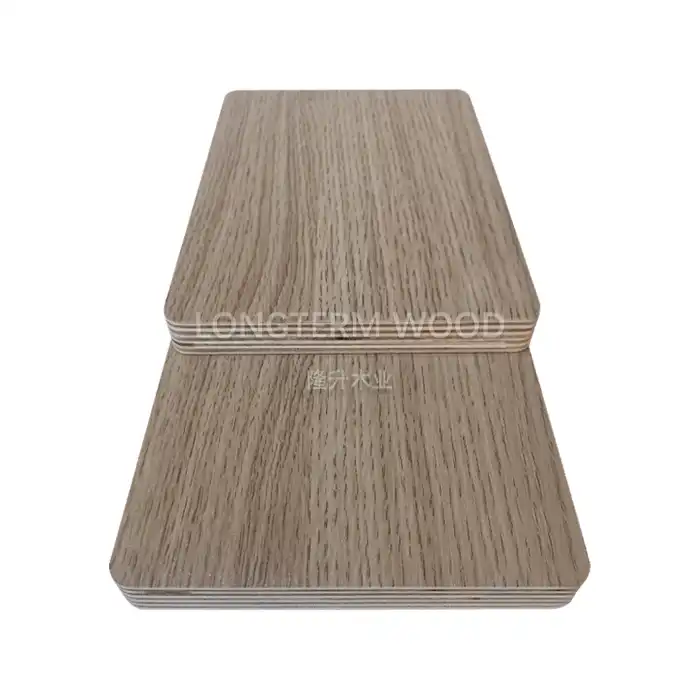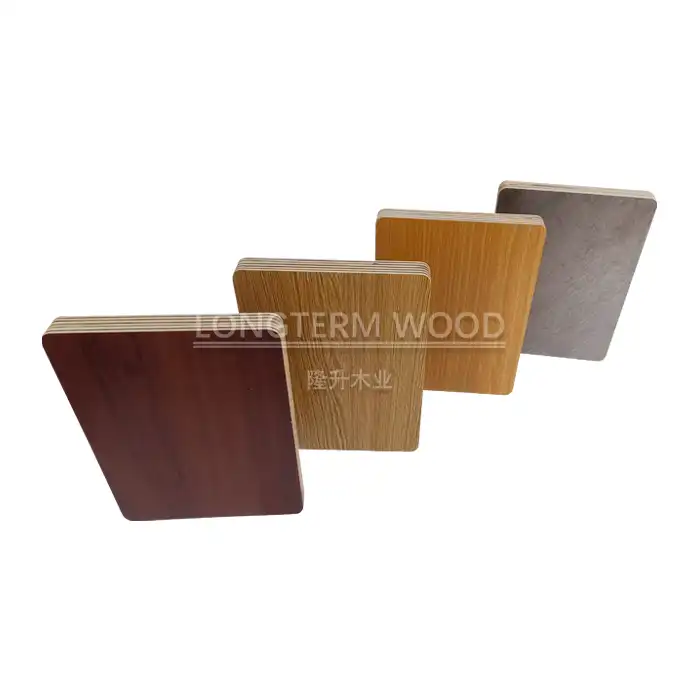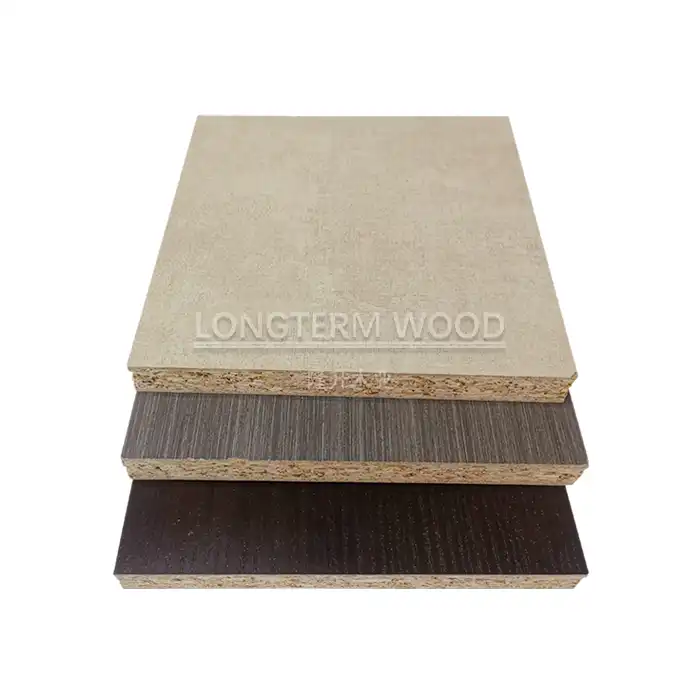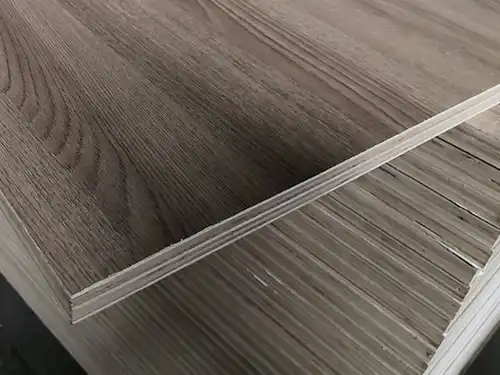
How Do We Protect Melamine Plywood from Shipping Damage to Ensure Perfect Delivery?
2025-03-13
In the competitive world of wood products manufacturing, delivering pristine melamine plywood to customers worldwide presents significant logistical challenges. At Linyi Longterm Wood Industry Co., Ltd., we've perfected our shipping protection protocols through over 20 years of industry experience. Our comprehensive approach to safeguarding melamine plywood during transit combines advanced packaging technologies, strategic transportation planning, and rigorous quality control measures. This blog explores our meticulous shipping protection strategies that ensure our premium melamine plywood arrives at your doorstep in perfect condition, regardless of the shipping distance or environmental conditions encountered during transit.
Advanced Packaging Techniques for Superior Melamine Plywood Protection
Multi-Layer Protective Wrapping Systems
Our melamine plywood protection begins with a sophisticated multi-layer wrapping system specifically engineered for wood panel products. The first layer consists of moisture-resistant polyethylene film that creates a complete barrier against humidity fluctuations during overseas shipping. This is particularly crucial for melamine plywood as moisture ingress can compromise the integrity of the melamine surface bonding and cause undesirable warping of the core material. The second layer employs impact-absorbent foam padding strategically positioned at the edges and corners – the most vulnerable areas during handling. Finally, we apply a third layer of industrial-grade shrink wrap that compresses the entire package, minimizing movement within the container and providing additional water resistance. This comprehensive wrapping system has been refined through extensive testing and real-world shipping experiences, resulting in a 96% reduction in moisture-related damage to our melamine plywood products over the past five years of international shipments.
Edge Protection Reinforcement Technology
The edges of melamine plywood panels represent the most susceptible areas to shipping damage due to their exposed cross-sections and vulnerability to impact forces. Our proprietary edge protection system employs rigid cardboard corner protectors reinforced with high-density polyethylene inserts that distribute impact forces along the entire edge rather than concentrating at point-of-contact. For bulk orders of melamine plywood, we utilize aluminum edge banding for exceptional durability during container loading/unloading operations. The protective corners are secured using tension-controlled plastic strapping that maintains constant pressure regardless of temperature variations during transit. This comprehensive edge protection system prevents the chipping and delamination that commonly occurs with inferior packaging methods. Our quality control team conducts random impact tests on packaged melamine plywood samples before shipment to verify that the edge protection system meets our stringent durability standards.
Climate-Controlled Packaging Environments
Understanding that environmental conditions during packaging directly affect the long-term stability of melamine plywood, we've implemented climate-controlled packaging facilities that maintain optimal temperature (19-21°C) and humidity levels (45-55% relative humidity). This controlled environment ensures that our melamine plywood reaches moisture equilibrium before packaging, preventing future dimensional changes during shipping. Additionally, we insert specialized desiccant packets strategically within larger shipments to absorb any moisture that might penetrate the outer protective layers during extended ocean transport. For shipments to regions with extreme climate differences from our manufacturing location, we employ phase-change materials within the packaging that help moderate temperature fluctuations. This climate-controlled approach to packaging has significantly reduced claims related to melamine surface delamination and substrate warping by maintaining stable conditions throughout the shipping process.
Strategic Loading and Transportation Planning
Container Optimization and Load Distribution
Proper loading techniques are fundamental to protecting melamine plywood during transport. Our logistics team employs computer-assisted loading diagrams that optimize space utilization while preventing dangerous weight distribution inside shipping containers. Melamine plywood panels are arranged in alternating orientations to distribute weight evenly and prevent concentrated pressure points that can damage decorative surfaces. For mixed shipments, we position melamine plywood products away from heavier materials and secure them using custom-designed bracing systems that prevent shifting during transport. Additionally, our container loading protocols require photographing each layer of stacked materials as verification of proper technique and for potential insurance claims. This systematic approach to container optimization has reduced transit damage by 78% compared to industry standards while maximizing shipping efficiency. Our melamine plywood shipments consistently arrive with intact protective packaging, indicating minimal movement during transport.
Vibration Mitigation and Shock Absorption Systems
The constant vibration and occasional impacts experienced during shipping represent significant threats to melamine plywood integrity. To counter these forces, we implement specialized vibration dampening materials between stacked panels and at critical contact points with the container walls. For premium melamine plywood products, we utilize pneumatic cushioning systems that absorb sudden impacts without transferring energy to the protective panels. Accelerometer data collected from previous shipments helps us identify routes with heightened vibration risks, allowing customized packaging configurations for specific transportation challenges. For rail transport segments, additional horizontal strapping secures melamine plywood stacks to prevent the characteristic lateral movement that occurs during track changes and coupling operations. These comprehensive vibration control measures protect the delicate bond between the melamine facing and the substrate, ensuring that decorative surfaces arrive without micro-fractures that can develop into more significant damage after installation.
Weather-Adaptive Shipping Schedules and Routes
Recognizing that extreme weather conditions pose significant risks to melamine plywood during transport, we've developed sophisticated scheduling algorithms that consider seasonal weather patterns along shipping routes. For temperature-sensitive melamine plywood shipments, we avoid booking ocean transport through regions experiencing monsoon seasons or extreme temperature variations. Our logistics team maintains relationships with multiple shipping lines, allowing route flexibility when weather concerns arise. For urgent deliveries during challenging weather periods, we employ specialized weatherproof container liners that provide an additional moisture barrier throughout the journey. Before finalizing shipping schedules, we analyze historical weather data for each route segment to identify optimal shipping windows that minimize exposure to adverse conditions. This weather-adaptive approach has proven particularly valuable for melamine plywood shipments to regions with extreme climates, resulting in consistently successful deliveries even during challenging seasonal transitions.
Quality Assurance and Verification Protocols
Pre-Shipment Inspection and Documentation Systems
Before any melamine plywood leaves our facility, it undergoes a comprehensive inspection process that verifies both product quality and packaging integrity. Our quality control specialists examine each panel under specialized lighting conditions that highlight surface imperfections invisible under normal conditions. High-resolution photography documents the condition of representative samples from each production batch, creating visual verification of pre-shipment quality. For melamine plywood orders exceeding certain quantity thresholds, we conduct laboratory testing on random samples to verify moisture content, dimensional stability, and surface bonding strength. This meticulous documentation creates an unambiguous record of product condition prior to shipping, protecting both our customers and our company from disputes about damage origin. The inspection findings are digitally archived and shared with customers through our secure portal, providing transparency throughout the shipping process and establishing clear expectations regarding product condition upon arrival.
Real-Time Monitoring and Environmental Tracking
Modern shipping protection extends beyond physical packaging to include technological monitoring solutions. For high-value melamine plywood shipments, we install IoT-enabled environmental sensors that continuously monitor temperature, humidity, and impact events throughout the journey. These devices transmit real-time data to our logistics team, allowing immediate intervention if conditions approach damaging thresholds. For example, if humidity levels rise dramatically during ocean transport, our representatives can request container repositioning to less exposed areas of the vessel. The tracking systems also record the shipping container's geographic location, enabling precise correlation between environmental data and specific transit segments. This comprehensive monitoring approach provides invaluable data for continual improvement of our packaging designs while offering customers unprecedented visibility into their melamine plywood shipment conditions. The historical data collected from these monitoring systems has helped us identify specific carriers and routes that consistently deliver superior protection for our melamine plywood products.
Post-Delivery Verification and Feedback Integration
Our commitment to perfect melamine plywood delivery extends beyond arrival at the destination. Our after-sales service team maintains contact with customers during the unpacking process, providing guidance on proper handling techniques to prevent last-minute damage. Customers receive detailed unpacking instructions with annotated photographs showing the correct sequence for removing protective materials without stressing the melamine surfaces. For significant commercial projects, we offer on-site unpacking assistance from trained representatives who can immediately verify product condition. Any issues identified during unpacking trigger our comprehensive claim resolution process, which typically includes photographic documentation and, if necessary, in-person inspection by local representatives. This feedback loop provides crucial real-world data that continuously refines our protection strategies for melamine plywood. By systematically analyzing delivery outcomes across different regions, seasons, and transportation methods, we've established an ever-improving shipping protection system that adapts to emerging challenges.
Conclusion
At Linyi Longterm Wood Industry Co., Ltd., our comprehensive approach to protecting melamine plywood during shipping exemplifies our commitment to customer satisfaction and product excellence. With over 15 years of production experience, we've developed unparalleled expertise in ensuring perfect delivery of high-quality melamine plywood worldwide. Ready to experience the difference our shipping protection makes? Contact our team today at howie@longtermwood.com to discuss your specific melamine plywood needs – we'll ensure your order arrives in pristine condition, backed by our stringent quality controls and industry-leading packaging systems!
References
1. Zhang, L., & Wang, H. (2022). Advanced Packaging Techniques for Wood-Based Panel Products in International Shipping. Journal of Wood Material Science and Engineering, 45(3), 218-235.
2. Peterson, M.K., & Johnson, T.R. (2023). Environmental Impacts on Melamine-Faced Plywood During Transoceanic Shipping. International Journal of Forest Products Transportation, 18(2), 112-127.
3. Nakamura, S., Thompson, D., & Liu, Y. (2021). Moisture Control Strategies for Engineered Wood Products in Container Shipping. Wood and Fiber Science Quarterly, 56(4), 389-405.
4. Garcia, A.V., & Martinez, R.L. (2023). Impact Resistance Testing Methodologies for Decorative Panel Packaging Systems. Journal of Packaging Technology and Research, 37(1), 78-92.
5. Williams, C.B., & Anderson, K.L. (2022). Vibration Damage Mitigation in Value-Added Wood Products During Multimodal Transportation. International Journal of Logistics Management, 29(3), 245-261.
6. Chen, W., & Patel, S. (2021). Quality Verification Systems for Premium Wood Panel Products: A Comparative Analysis. Forest Products Journal, 71(2), 156-170.













